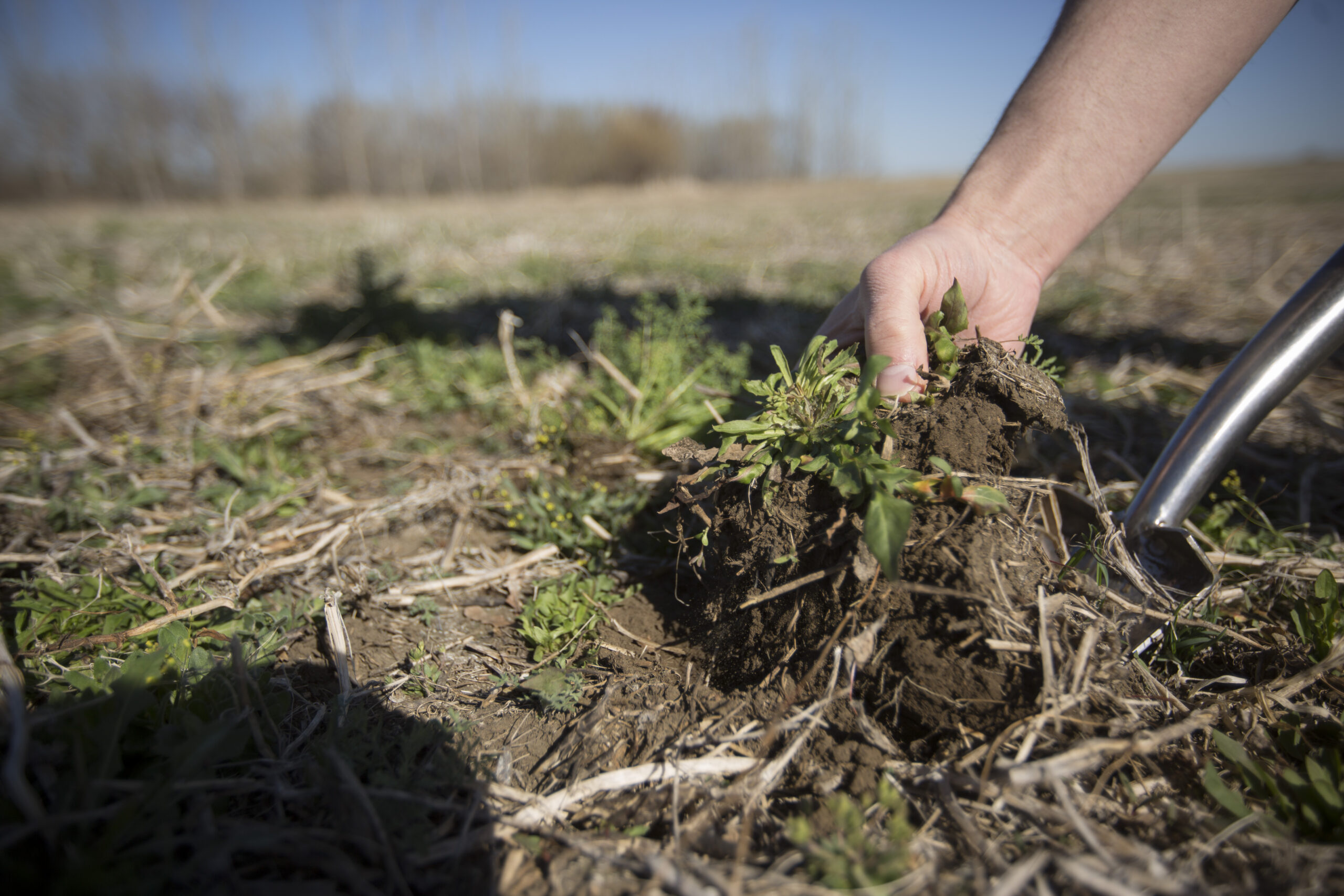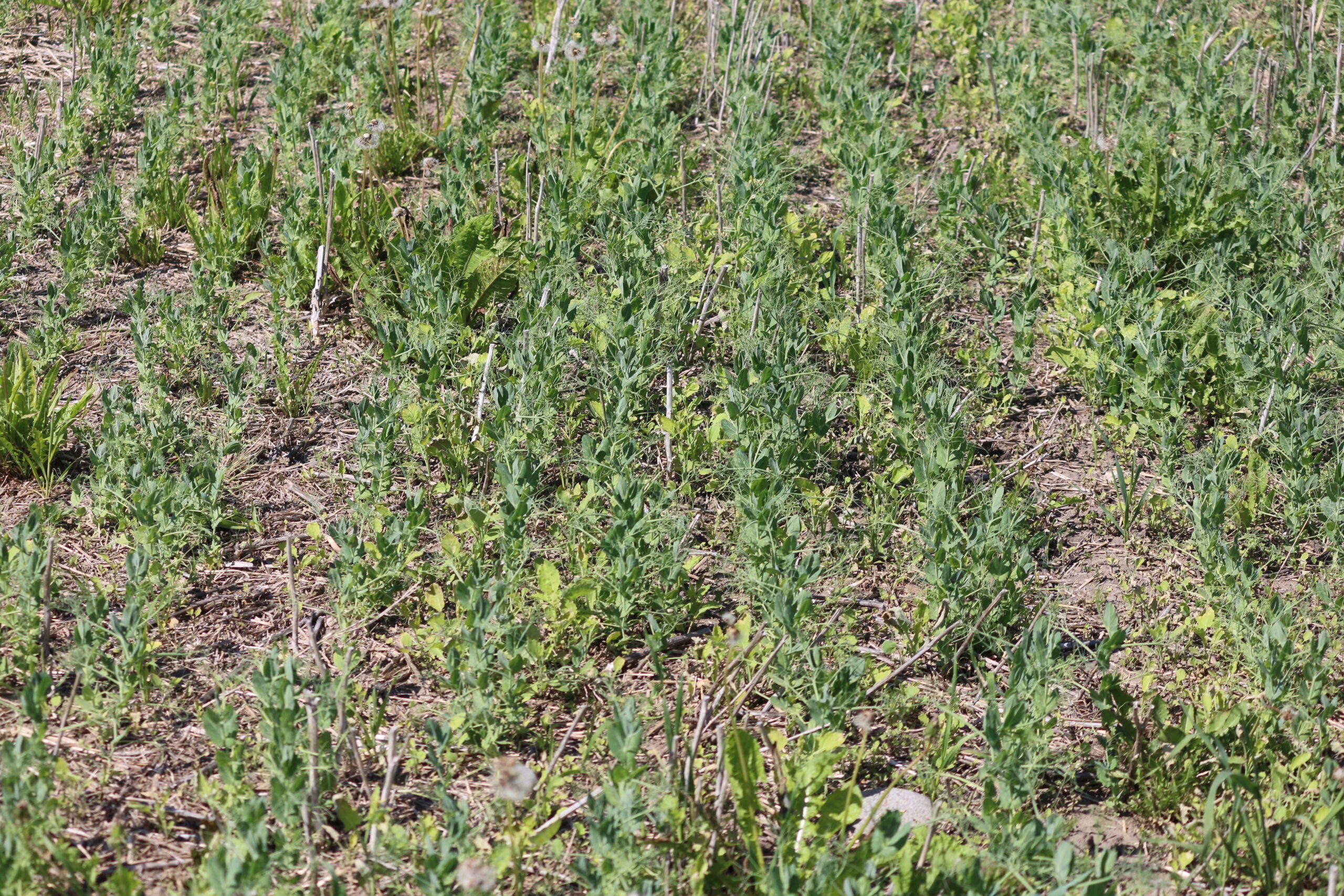Research Objective
To help develop control/management guidelines for weeds problematic in pulse crop production including herbicide resistant biotypes.
Objective 4To improve the ability of growers to manage weed seeds, including weed seed shed and seedbank management.
Objective 7To assist in the development of re-cropping guidelines for pulse crops following the application of soil residual herbicides to other crops in the rotation.
To help develop control/management guidelines for weeds problematic in pulse crop production including herbicide resistant biotypes; to screen candidate herbicides for use in pulse crops, especially soybean and faba bean; to improve our biological and ecological knowledge of problematic weeds in pulse crop production; to improve the ability of growers to manage weed seeds, including weed seed shed and seedbank management; to assess and improve pulse crop competitive ability; to develop improved integrated weed and crop management options for pulse growers; to assist in the development of re-cropping guidelines for pulse crops following the application of soil residual herbicides to other crops in the rotation.
Pulse crops are highly reliant on herbicides such as ALS inhibitors for weed control, resulting in resistant weed species that threaten the sustainability of pulse production. Integration of multiple factors is required to manage weeds in the future. This project has the following objectives:
- To develop management guidelines for problematic weeds in pulse crop production including HR biotypes.
- To screen candidate herbicides in pulses, with emphasis on soybeans and faba beans.
- To improve our biological and ecological knowledge of problematic weeds in pulses.
- To improve the ability of growers to manage weed seeds, including weed seed shed and seedbank management.
- To assess and improve pulse crop competitive ability.
- To develop improved IWM and ICM options for pulse growers.
- To develop re-cropping guidelines for faba beans following the application of soil residual herbicides.
Nineteen comprehensive field trials were conducted in 2018 among locations (Saskatoon, Scott, Melfort). Preliminary findings include:
- The estimated critical period of weed control in faba beans was between 30 and 75 growing degree days, which roughly correlates to the 3- to 8-leaf growth stages.
- Sequential application of PRE and POST herbicides had the greatest benefit on soybean yield. Combining this herbicide regime with an early seeding date improved volunteer canola control. Seeding in narrow rows generally resulted in greater crop yields and lower volunteer canola interference.
- Optimum seeding rate for faba beans was 50 to 75 seeds m-2 when herbicides were applied and 75 to 100 seeds m-2 without the use of herbicides.
- Integrated faba bean production systems that include early seeding combined with narrow-row spacing, high seeding rates, and mechanical weed control combined with a residual PREherbicide resulted in highest yields, compared to systems with delayed seeding, low seeding rates, and wide row spacing.
- Field pea cultivars may have a greater effect on weed competition than seed treatment.
- Competitive pea cultivars combined with increased seeding rate and PRE- herbicides resulted in higher yields in the presence of weed competition.
- Plant drydown from contact herbicides like Reglone and glyphosate were generally more effective than Roundup or Heat. Late maturing cultivars generally showed a greater response to pre-harvest herbicides than early maturing cultivars.
- Faba beans exhibited some injury to pre-emergence application of Valtera, Valtera plus pyroxasfulone, and Heat plus pyroxasulfone on a coarse textured soil near Saskatoon.
- Faba beans displayed sensitivity to Lontrel, Accord (quinclorac), Everest, and Infinity residues.
- The application of PRE- herbicides reduces weed density prior to POST- application, reducing herbicide resistant weed selection pressure.
- There is insufficient selectivity from post-emergence application of amicarbazone in lentils to warrant further investigation.
- Lentil tolerance to PRE- application of pyridate was good; however, POST application was unacceptable. Pyridate applied POST- in chickpeas resulted in acceptable crop tolerance and efficacious wild mustard control.
- Precision inter-row spraying in lentils has been variable in 2 years of study.
- Field pea fields supported the highest carabid beetle activity while faba beans supported the lowest.
Related Resources

Protecting Insect Habitat Could Mean Fewer Seeds in the Weed Seed Bank

Expanding Weed Control Options in Lentil



